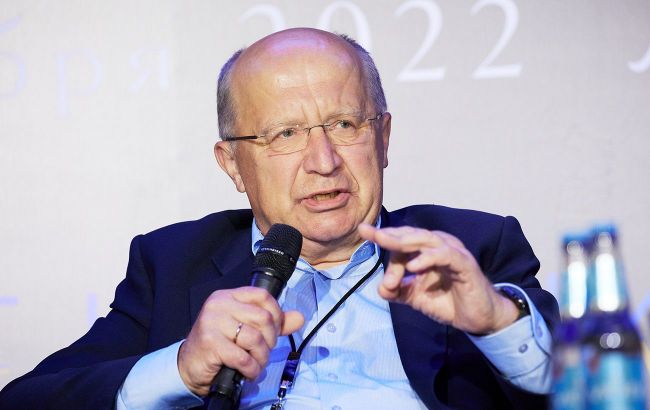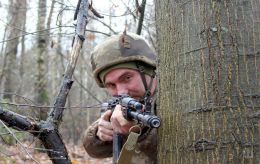EU defense chief proposes to create drone army to resist Putin
 Photo: Andrius Kubilius (Getty Images)
Photo: Andrius Kubilius (Getty Images)
Military intelligence warns of possible Russian attack on NATO allies within five years, EU could face millions of drones, RBC-Ukraine reports, citing the EU Commissioner for Defense and Space Andrius Kubilius in his interview with Sky News.
Threat from Russia
"Russia can have around five million drones, so we need to have capacities bigger than those in order to prevail," Kubilius said.
EU Commissioner warned that if Vladimir Putin gives the order to strike, Europe would face a "battle-tested" Russian army capable of deploying "millions of drones."
Ukraine's experience
Since the start of Russia's full-scale invasion, drones have become a key weapon. Ukrainian drone units are responsible for 80% of Russian equipment and personnel losses on the front lines.
In the so-called "Death Valley," a 1,200 km-long frontline, drones dominate all movements. In this area, a tank survives no longer than six minutes under drone fire.
Lithuania's approach
Lithuania, which shares a 900 km border with Russia and Belarus, is planning for 3 million drones in the first year of any conflict - a number predicted from Ukraine's use of 4 million along a shorter front line.
This massive order would allow for the rapid creation of a dense drone barrier. Kubilius insists Europe must build similar reserves to avoid being caught unprepared on "Day X."
EU preparation
Mass-producing millions of drones in advance is pointless, Kubilius says - they would become outdated within months. Instead, Europe should invest in workforce development: drone operators, engineers, and producers.
Just as crucial is scaling manufacturing capacity and supply chains, so mass production can be launched quickly if needed. This would also reduce storage costs and speed up deployment.
Role of innovation and future of drone warfare
At the NATO summit in The Hague, allies agreed to ramp up investments in drones and increase air defense funding fivefold. The British 20-40-40 model already places drones at the heart of tactical planning:
-
first wave - drones
-
second wave - traditional platforms
Across Europe, companies are building drone catchers with a 5 km radar range and "flying bombs" for the Ukrainian army. Germany and the UK are accelerating procurement and launching joint production projects, recognizing that whoever gets new tech first will win.
Meanwhile, US President Donald Trump, in his 2026 budget request, proposes boosting missile and drone programs at the expense of traditional aircraft and naval forces.
Earlier, in March, Colonel Vadym Sukharevskyi, Commander of Ukraine's Unmanned Systems Forces, warned that NATO armies are not yet prepared for modern drone warfare.

